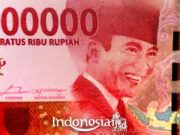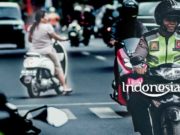During the Dutch East Indies era, the city of Jayapura was named Hollandia. After the Dutch handed Papua to UNTEA (United Nations Temporary Executive Authority), Hollandia was changed to become a New City. During the Old Order, Kota Baru was changed to Soekarnopura. During the New Order era, Soekarnopura was renamed Jayapura.
Humboldt Bay was first visited by Europeans when in 1827 Dumont d’Urville with the Astrolabe ship docked in this area. The name Humboldt was later given to this bay. On the first visit there was no contact with the residents. This did not happen until 1858, when a commission under H. D. A van der Goes, with the ship Etna, docked in Youtefa Bay, and raised the Dutch flag for the first time.
After that there followed a series of visits, mainly from Dutch government officials (1871-1891). In 1892 the first white man – natural scientist – W. Doherty, arrived in Sentani for the first time, which was then followed by a zendeling G. L. Bink.
In 1901 the Humboldt Bay, Youtefa Bay and Lake Sentani areas were carefully investigated for inclusion on the map. Then there was a series of visits from natural investigators such as A. Wichman, H. A. Lorentz, geologist W. van Bemmelen, biologist A. E. Pratt, and zendeling doctor F.J.F. van Hasselt.
Based on the Governor’s Decree No. 4 dated August 28, 1909, to the Assistant Resident in Manokwari was assisted by an army detachment. This detachment is seconded mainly to differentiate preparations for a Dutch-German border commission.
Furthermore, in line with the decision of the Gubernemen aboard the Edi ship on September 28, 1909, the detachment led by Infantry Captain F. J. P. Sachse landed in Humboldt Bay.
From here they immediately made a map of the location and made limited exploration. The border commission was headed by Sailor I Lieutenant J. L. H. Luymes, while Infantry Captain Sachse served as security. The first bivouacs were selected near the Numbai river – often called the Anafre river.
The inhabitants of the bivouac consist of four officers, 80 soldiers, 60 people carrying goods, then there are laborers, servants, wives, and children of about 270 people. After three months of living, some of them were suffering from malaria and about 30 people were suffering from beriberi.
Since the German border expedition in eastern Papua gave the bivouac the name Germainshok, in a simple ceremony attended by four teams dressed in uniform ready to surround the flagpole, on March 7, 1910 Captain Saches gave the bivouac the name “Hollandia”.
He then gave his message in Dutch, followed by Malay, while commanding “In naam der Koningin, hijs de vlag God geve, dat zij nooit zaklworden neergehaald” (In the name of the Queen, raise the Dutch flag. Hopefully with God’s blessing this flag will not be lowered. ). As soon as the flag flew, all the klewangs were yanked from their sheaths and three times a shout of “Hoera” was heard.
In further development, according to the Decree of the Governor General of the Dutch East Indies dated December 14, 1925 No. 3
The Pacific War broke out on December 7, 1941 with a Japanese attack on the United States Navy base at Pearl Harbor in Hawaii. In a short time Japan controlled the entire Pacific, including the northern coast of Papua. The Dutch who controlled Papua were powerless against it and retreated to Australia.
In the nanshin rod movement on April 19, 1942, Japanese troops landed in the Humboldt Bay Area, Vim, and Abepantai. Japan assesses that the geological conditions and the structure of the coastal land in Hollandia which are mostly rocky guarantee that there will be no silting of the coast, allowing the berth of relatively large ships, so that it will facilitate the growth of Hollandia as a place of exchange between commodities and slowly make Hollandia grow into a city. regional trading ports and cities, even as centers of power.
Based on this and in the belief that Hollandia was very strategic, the Japanese anchored their ships and marines in Humboldt Bay. Then in August, Japan again added infantry troops to strengthen its marines.
According to Allied reports, the entire Japanese army in Hollandia was estimated to be two infantry regiments plus one regiment of marines or more. Around Sentani, Japan built an airfield and stationed 350 warplanes. There were quite a number of defensive cannons around the airfield.
Japan also built barracks, bridges including docks such as Hamadi Beach, APO, and Youtefa Bay. Sheltered bays and important airfields made Hollandia the stronghold of Japanese defense.
Likewise, the Japanese supplies in Hollandia were recognized by the Allies as being the largest and richest in the Pacific.
The Pacific War which caused much destruction also had a positive impact on Hollandia’s development activities. Using Humboldt Bay, as the easternmost bastion against the attack of American and Australian troops, the Japanese army built airstrips, logistics bases, and a road network around Humboldt Bay.
To prepare an airfield and military facilities, the Japanese mobilized the local population. So it is understandable that the indigenous people of Hollandia lost most of their crops. Even domestic pigs and chickens were taken by Japanese soldiers by force.
In the Pacific war, Papua was included in the strategic area of the Supreme Commander of the Southwest Pacific Region General Douglas Mac Arthur in the context of a counterattack towards Tokyo. The Allies intended to destroy Japanese defenses first from the Coral Sea to Saipan Island.
The defeat of Japan in the Battle of the Coral Sea on 7 May 1942 and Midway 4-7 June 1942 was a turning point for the allies.
Japan’s position worsened when the Allies began to launch bombing on a large scale to Papua (Dutch New Guinea at that time). Hollandia, which is the base defense of Japan after Wewak and Hansa Bay in PNG, felt a heavy bombardment in March-April 1944.
This Allied invasion of Holland marked the end of the Japanese occupation of Holland and culminated in April 22, 1944, as a large Allied fleet approached the coast of Holland.
No less than 215 warships supported by about 800 aircraft shadowed the allied units that landed from two directions. From Tanah Merah Bay (Depapre) and Humboldt Bay (Hamadi Beach). This operation, code-named “reckless”, was led by General Douglas Mac Arthur assisted by Admiral D. E. Barbey and Lieutenant General R. L. Eichelherger from aboard the aircraft carrier Nashville. At 10:00 am on 22 April 1944 General Douglas Mac Arthur landed at Hamadi Beach.
The Japanese army in Hollandia was apparently helpless against the invasion of the allies. Admiral Endu of the Japanese VIII-IX fleet which had just been stationed in Hollandia, did not move to face the invasion of the allies. Finally, Endu and his troops fled to the forest around Hollandia and are thought to carry out harakiri.
A number of engineers were then deployed by the allies to strengthen their base at Sentani. The additional personnel who are technical engineers are also technicians based on the base of a former Japanese military base.
Their main task was to make the new runway wider so that the B-29 Superfortress bombers could land them. They are the ones who play an important role in making the airstrip and the surrounding roads; the results of their work are still in use today.
In the process of constructing this foundation and highway, Allied troops worked extra hard by first leveling the sides of the mountains around the area. After that, bridges and water pipes were erected along the river. Then, to make a highway, the marshes were covered with gravel and stones. In just one night, Hollandia metamorphosed from a lonely village to a city with a population of 250,000 people – a number that was one-third more than the total population of Papua at that time.
Hollandia later became one of the greatest military bases during WWII and most of the commands for the Southwest Pacific region operated from Hollandia. The Allies made Hollandia as Base G, equipped with nine shipyards (docks), military facilities, hospital, warehouse, shops and entertainment venues.
The allies’ remains can be seen from the buildings and toponyms. Allied heritage buildings in the form of round houses in Ifar Gunung, Abepura, APO, and Sentani. Hospital building on Dok II, oil tank at Depare. Toponyms of allied heritage include Base-G, Skyline, APO, Hawaii, Entrop, and Docs I to IX.
In 1944-1945, Papua was ruled by allies. The allied commander in charge of Dutch officials called NICA (Netherlands Indies Civil Administration). The duties of the NICA are related to civil affairs. NICA consists of SONICA (Senior Officer NICA) who is equal in position to resident and CONICA (Commanding Officer NICA), who is equal in position to assistant resident.
General Walter Krueger, commander of the United States Sixth Army unit is Colonel C. Giebel.
Then the SONICA Nugini region in 1946 officially became a residency under the Grote Oost governorate.
The New Guinea residency in 1947 was divided into four afdelings – each under a resident assistant who oversees the administration of the local daily. At the time of the recognition of Indonesian sovereignty on 27 December 1949, the residency of New Guinea, including its authority as HGB (Hoofd van het Gewestelijk Bestuur, head of administration for the administrative region), became governed by the new position of governor of New Guinea-Netherlands. The Dutch New Guinea governorate has its capital in Hollandia.
In building the physical city of Hollandia, the Netherlands only needs to continue the work that had been initiated by the Japanese and allied troops. The governor of Dutch New Guinea employed masons from the island of Biak and residents around Jayapura. Currently the Dutch heritage can be seen from the buildings and toponyms, such as the Dok II Hospital, Angkasa, Abepura, the DPRP Building, the Governor’s Office Dok II. Toponyms include Kampkei, Vim, Klofkamp, Holtekamp, Kampwolker, Kampcina, and Polimak.
Source : Jubi

































